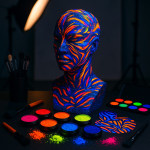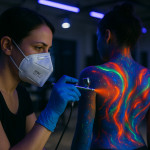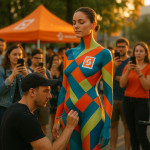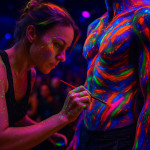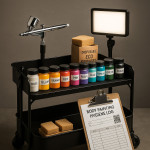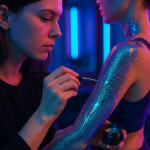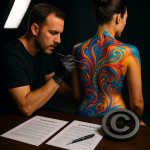Outdoor shoots: waterproofing techniques for the body-painting maquilleur kit
Rain, perspiration, sea spray or pool dives—outdoor shoots throw plenty of moisture at your artistry. Discover actionable waterproofing strategies that keep every brushstroke intact, protect skin health and save precious retouch time on set.
Why waterproofing matters for body-painting outdoors
Weather reports lie. Even a “clear sky” forecast can turn humid or windy, and a quick cloudburst can erase an hour of detailed line work. Effective waterproofing:
- Maintains colour vibrancy for 6–8 hours, limiting costly breaks.
- Reduces transfer to wardrobe, props and camera gear.
- Protects the model's skin from friction burns caused by wet garments.
- Speeds post-production because editors spend less time patching streaks.
Build a moisture-proof kit in five layers
1. Prep: cleanse and prime
Start with alcohol-free micellar water to remove sebum and sunscreen. Follow with a silicone-based body primer; its occlusive film anchors pigments without clogging pores.
2. Pigment selection
Choose hybrid water-alcohol paints rated “Level 3” or higher for rub resistance. Brands list ASTM D3359 adhesion scores—aim for 4B or 5B when humidity exceeds 60 %.
3. Binder boosters
Mix 3 % cosmetic-grade isododecane into liquid pigments. This solvent flashes off fast, leaving a flexible resin that resists water but still lets skin breathe.
4. Sealers: double coat for insurance
Layer an airbrush sealer, let it dry three minutes, then mist a cosmetic setting spray holding at least 35 % acrylates copolymer. The two products cross-link, forming a micro-mesh that handles light rain and sweat.
5. Topcoat add-ons
Finish with a mattifying anti-transfer powder on friction zones—elbows, inner arms, costume edges. Silica microspheres absorb excess moisture and minimise shine under midday sun.
On-set workflow: waterproofing without downtime
- Stagger models. While Coat 1 cures on Model A, apply primer to Model B. This leapfrogs drying time.
- Use a portable convection fan. It halves solvent flash-off and prevents dust contamination.
- Keep blotting cloths handy. Microfibre pads dab sweat before it travels into paint layers.
- Run touch-up stations. Pack pre-loaded sponge sticks dipped in diluted pigment for rapid edge fixes.
Emergency fixes for sudden showers
| Issue | Quick solution | Time (min) |
|---|---|---|
| Water droplets beading | BLOT gently, re-spray sealer, fan-dry | 2 |
| Colour streaking | Blend edges with alcohol-activated palette, seal again | 5 |
| Large paint lift | Alcohol wipe, re-prime, airbrush base colour, double seal | 8 |
Skin safety: waterproof ≠ occlusive
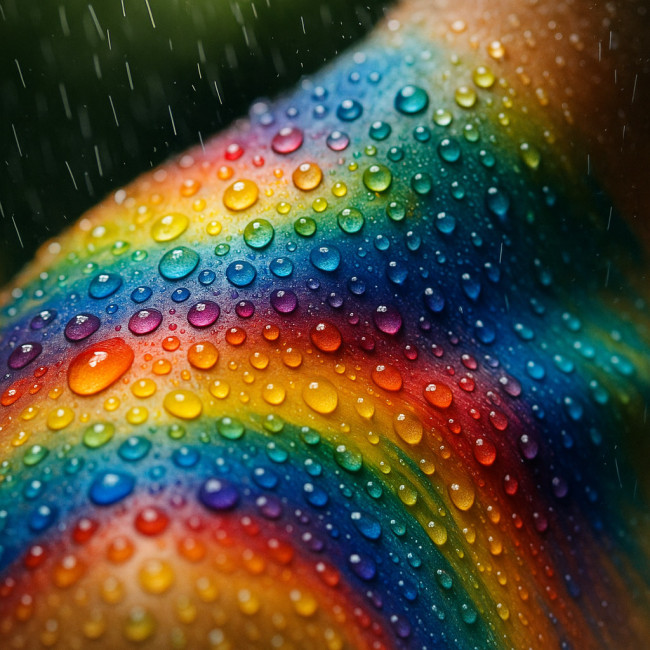
Extended seals can trap sweat and elevate skin temperature. Schedule rinse breaks every three hours, especially for models in full-coverage designs. Provide pH-balanced cleanser and fragrance-free moisturiser post-shoot to restore the acid mantle. Encourage the cast to report any itching, prickling or tightness immediately; these early warning signs of irritation let you step in before redness escalates. When possible, rotate models into shaded rest areas equipped with cool packs and electrolyte drinks so the body can regulate temperature naturally without compromising the paint. This holistic approach keeps the artwork pristine while safeguarding epidermal health, ensuring both creative excellence and ethical working conditions even on the hottest, most humid locations.
Pro tips from seasoned outdoor artists
- Spray glycerin-free hydrating mist before priming; glycerin attracts water.
- Keep blot papers in costume pockets—models can manage micro-touch-ups between takes.
- Catalogue each formula in a kit log. Note humidity, temperature and wear time to refine future mixes.
- Coordinate looks with the wardrobe team through joint moodboards so fabric textures don't compromise paint adhesion.
Waterproofing checklist to pack
- Silicone primer (150 ml)
- Hybrid water-alcohol paints (8 shades minimum)
- Isododecane vial (30 ml, dropper)
- Airbrush sealer (120 ml)
- High-hold setting spray (200 ml)
- Silica finishing powder + giant kabuki brush
- Convection fan (battery powered)
- Microfibre towels & oil-free blot papers
- pH-balanced cleanser & moisturiser
Budgeting waterproof supplies
Waterproof additives raise material costs by 10–15 %. Balance your quote by factoring weather-related overtime and potential reshoots. For guidance on rates, review the body-painting maquilleur day rates benchmark.
Related outdoor durability reads
Stay ahead of climate challenges with these resources:
Case study: tide-pool fashion editorial
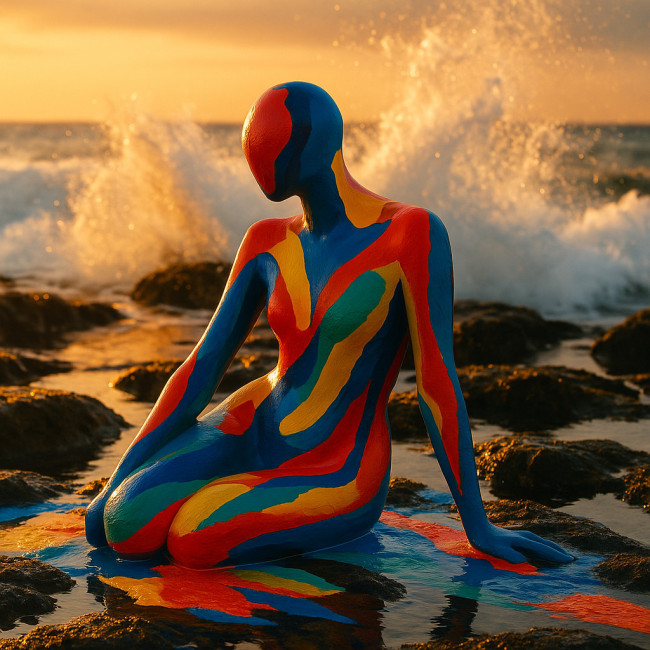
A recent editorial shot on rocky Atlantic tide pools combined saltwater splashes and direct sun. The team followed the five-layer method plus shade canopies. Result: zero paint lift after four hours, and retouch time in post dropped by 30 %. The stylist later booked the same crew via the body-painting artist directory after citing “flawless waterproof finish” in her review. Behind the scenes, assistants kept a log of ambient humidity, UV index and wind speed, data that later informed refinements to primer–sealer ratios on future gigs. Reflectors were angled to bounce warm light onto the model without raising skin temperature, while neoprene kneepads protected against jagged rocks during low-angle poses. These micro-decisions illustrate how technical waterproofing knowledge, environmental monitoring and ergonomic planning coalesce to create bullet-proof artistry that withstands the relentless interplay of salt, sun and surf.
Interactive quiz: test your waterproofing IQ
FAQ
- Can I rely on alcohol-activated paints alone?
- They offer good longevity, but a sealer and setting spray still add crucial abrasion resistance, especially against costume friction.
- Does waterproofing change removal time?
- Yes. Plan 15 extra minutes for gentle oil-based removal followed by pH-neutral cleanser to avoid residue.
- What temperature range weakens waterproof bonds?
- Formulas start softening above 35 °C. Work under shade tents and cool packs to maintain integrity.
- Is silicone primer safe for sensitive skin?
- Medical-grade dimethicone primers are non-comedogenic, but always patch-test 24 hours before the shoot.
- How do I budget for extra sealer?
- Add 1 € per 50 ml of product per model; the cost is offset by fewer retouch hours.
Action step
Audit your current kit today. Identify at least two products you can swap for water-resistant alternatives before your next beachfront campaign. Your future self—and your client's post-production budget—will thank you.
